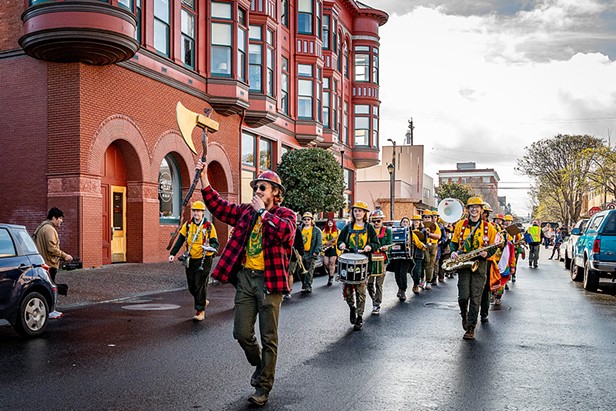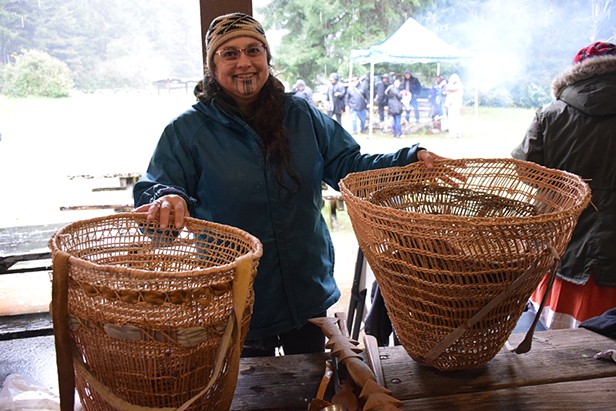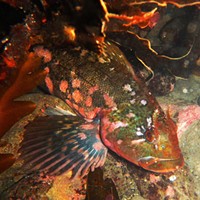Creatures of the Shallows
Photos by Mike, Julie and Jen Kelly
It seems like beautiful things are supposed to be rare. But Hermissenda is one of the most common local nudibranchs.
Photos by Mike, Julie and Jen Kelly
Yellow dorid sea slug.

Photos by Mike, Julie and Jen Kelly
Calalina Triopha sea slug.
Photos by Mike, Julie and Jen Kelly
Janolus sea slug.
Photos by Mike, Julie and Jen Kelly
The Hopkin’s rose sea slug is a normally southern species that showed up in northern California about three years ago when the sea was especially warm. They became the most conspicuous nudibranch in our local tide pools, but now they seem to have disappeared.
Photos by Mike, Julie and Jen Kelly
Heath's dorid sea slug. There are several similar yellow species that are commonly called sea lemons
Photos by Mike, Julie and Jen Kelly
Hudson’s dorid sea slug.
Photos by Mike, Julie and Jen Kelly
Spotted Triopha sea slug.
Photos by Mike, Julie and Jen Kelly
The Spanish shawl nudibranch is very uncommon around here. We’ve only seen two, one of which we saw on scuba in deeper water at Trinidad.
Photos by Mike, Julie and Jen Kelly
Nanaimo dorid.
Photos by Mike, Julie and Jen Kelly
White-lined Dirona sea slug.
Photos by Mike, Julie and Jen Kelly
Yellow-edged Cadlina sea slug.
Photos by Mike, Julie and Jen Kelly
Three-lined aeolid sea slug.
Photos by Mike, Julie and Jen Kelly
O’Donoghue’s dorid.
Photos by Mike, Julie and Jen Kelly
A painted anemone.
Photos by Mike, Julie and Jen Kelly
A pink-tipped anemone.
Photos by Mike, Julie and Jen Kelly
Giant green anemone with spider crab: We’ve noticed these small spider crabs associated with giant green anemones a couple of times.
Photos by Mike, Julie and Jen Kelly
We have several species of colorful anemones on our local rocky shores. Some species of anemone exhibit much variation, so there’s an endless supply of color.
Photos by Mike, Julie and Jen Kelly
Urchins have exploded in numbers recently. You may have read all about it in the North Coast Journal (“'Perfect Storm' Has North Coast Marine Ecosystem Reeling, Abalone in Crisis,” March 8). But it sure is pretty when the red urchins are hanging out with the purple urchins.
Photos by Mike, Julie and Jen Kelly
This unfortunate sculpin had several green marine leaches attached. And a normally non-parasitic isopod apparently thought a sculpin face was a good resting spot.
Photos by Mike, Julie and Jen Kelly
The cabezon is our largest sculpin, but this one is small. They come in a lot of bright colors that blend in with colorful algae They are hard to intimidate and will sometimes attack before fleeing. We still have all our fingers though.
Photos by Mike, Julie and Jen Kelly
This young-of-the-year red Irish lord sculpin appears to be eyeing its next meal.
Photos by Mike, Julie and Jen Kelly
The painted greenling, and greenlings in general, are very curious. They act all nervous but keep coming back to see what’s going on. It took about 15 minutes to get this one to pose.
Photos by Mike, Julie and Jen Kelly
We aren’t sure what species of sculpin this is but it’s about as colorfully detailed as they get.
Photos by Mike, Julie and Jen Kelly
This rock greenling was apparently protecting its nest on New Year’s Eve 2017. It stayed in our faces as we floated from pool to pool.
Photos by Mike, Julie and Jen Kelly
The monkeyface prickleback may or may not be grumpy. But they are definitely curious and with some patience they can be coaxed from the rocks to frown for the camera.
Photos by Mike, Julie and Jen Kelly
This is probably an east Pacific red octopus. It’s hard to tell them from juvenile giant Pacific octopus when they are small like this. Both of these species change colors rapidly from brick red to mottled green and yellow to almost white. They also change the texture of their skin. We’ve had the best luck seeing them at night in winter.
Photos by Mike, Julie and Jen Kelly
We have a lot of chiton species on the north coast, which range in size from a dime to a football. But the blue-lined chiton is the flashiest by far.
Photos by Mike, Julie and Jen Kelly
Marine Life of the Pacific Northwest by Lamb and Hanby calls the blue-ringed top snail “perhaps the Pacific Northwest’s most spectacular shell.”
Photos by Mike, Julie and Jen Kelly
Blue-spotted hermit crab.
Photos by Mike, Julie and Jen Kelly
Red rock crabs don’t start out red. The juveniles display a vast variety of colors and patterns.
Photos by Mike, Julie and Jen Kelly
This giant rock scallop will eventually attach to a rock. But when they are small, they are able to jet around, eyes first, by clapping their shells together.
Photos by Mike, Julie and Jen Kelly
Bering hermit crab: As the name suggests, the Bering hermit crab is in the southern part of its range around here.
Photos by Mike, Julie and Jen Kelly
Brittle stars are common under rocks. But please don’t turn over rocks to see them or else you’ll kill a bunch of stuff.
Photos by Mike, Julie and Jen Kelly
Pacific blood star.
Photos by Mike, Julie and Jen Kelly
Scale worm on ocre star: Scale worms are common on various sea stars and often mimic the color of the host — an ocre star in this case.
Photos by Mike, Julie and Jen Kelly
Six-armed sea star.
Photos by Mike, Julie and Jen Kelly
Stalked jellyfish. It attaches to kelp rather than swim around like regular bell-shaped jellyfish.
More slideshows
12 images
Mark Larson16 images
Mark Larson28 images
3/38
Photos by Mike, Julie and Jen Kelly
Calalina Triopha sea slug.
© 2024 North Coast Journal





Comments